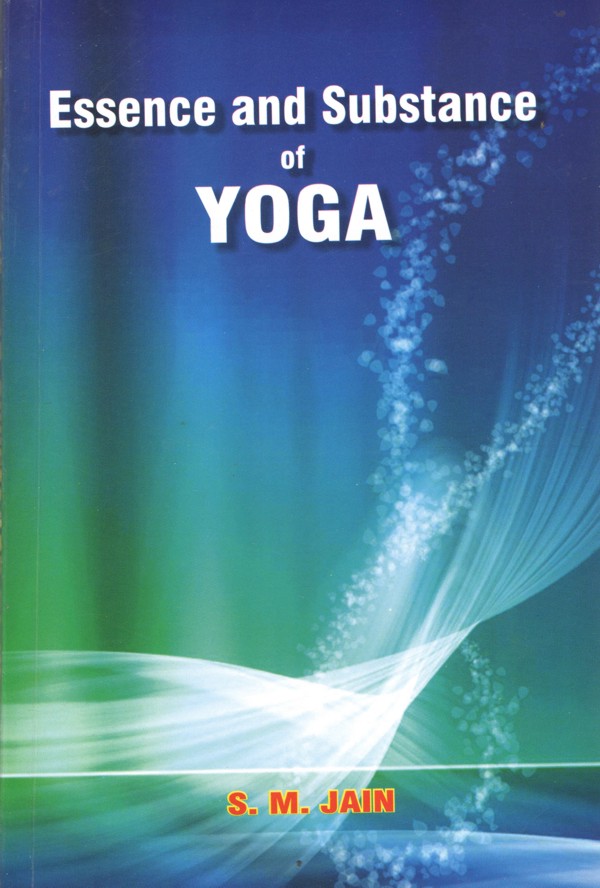Conclusion
Yoga is union not separation, universal not individual, aggregate not segregate, association not dissociation, interdependence not isolation, equality not vanity, benevolence not selfishness, phenomenon not noumenon, human not superhuman, symbiosis not predation or exploitation. All schools of yoga, eminent yoga teachers, canonical yoga scriptures agree on the very meaning of the word yoga ‘yujishayogem’ and its objective ‘sarvabhavantu’ but do not endorse the dictum “We all shall swim or sink together”. All systems of yoga, articulations and practices are individual centred. There is emphasis on oneself. One should rise and attain salvation, happiness, tranquillity, peace of mind, freedom from vices, sorrows and miseries and one should be healthy and fit. This is isolating an individual from the composite whole. This is against the very fundamentals of yoga. The argument is that if individuals rise the whole would rise. This is not possible because concentration is on individuals and this number is limited. They may rise temporarily but will be pulled down eventually by the pull of masses left unattended, untouched and unaffected. Nothing functions or can function in isolation. This is also an established scientific principle now. A simple example is that if air, water and soil are polluted no yoga practice will be of any help for any individual and may even harm as breathing exercises would be in polluted air. No one can remain healthy if drinking water is polluted and food eaten is from polluted soil and is containing residual chemical fertilisers and pesticides. Overall environment both physical (natural) and social should be amicable and congenial for good and welfare of any individual. There cannot be peace if there are even a few terrorists. History is witness that even mighty emperors, kings and rulers were pulled down by the pull of poor and suffering masses. It is an erroneous concept that an individual self (his soul) is competent to steer clear of adverse physical and social environment and will be able to rise above. The Ideal Yoga is universal for benefit of one and all, that all should rise together.
There are systems and subsystems from smallest at atomic and subatomic levels to higher planetary, galaxial and cosmic levels interacting in symbiotic yogic phenomenon. For example a human being is a complete and perfect system for all its organs heart, lungs, lever, brain etc. all working in sync and harmony for the whole. Every organ is made of cells where cells are parts or subsystems and the organs is a complete system for its part but organ itself is a subsystem or part in the whole body system. Each cell is made up of its various parts or organelles mitochondria etc. which are parts in a complete system of cell. Each part of cell is made up of molecules of atoms and atoms a of subatomic parts. Atom is a part or subsystem in molecule but a system for its parts. An individual human being is complete system for its parts but a part in family and family being system for its members is also a part in a group or society, so a society in a nation and nation in composite international system on the planet earth which is also a part in solar system and this too a part in a galaxy and galaxies in cosmic whole. There are infinite systems and subsystems in all life forms, water forms, air forms, and vegetation kingdom. All these are interdependent, interrelated and interacting in ideal yoga symbiosis. Yoga is universal from subatomic to cosmic levels. The essence is symbiosis or mutualism. In human body there are trillions of cells and each cell functions in symbiotic conformity with all other cells for mutual benefit and any aberration in a single cell may cause cancer and destroy the whole. Similarly any smallest part in any system may dislodge and distort the entire system. Every single part is important for the whole and so the whole for every single unit. One for all and all for one is an overwhelming principle.
The eight steps in prevailing yoga practices prescribed by Patañjali are accepted and followed by all other schools of yoga with some modifications. These steps Yama, Niyama, Asana, Pranayama, Pratyahara, Dharana, Dhyan and Samadhi will certainly be conducive to attain the objectives and goal of Ideal Yoga if interpreted and practised rationally and correctly without aberrations, transgressions and distortions in weird, occult, superstitious, imaginary pursuits. Yama enjoins on practitioners an ideal code of conduct to abide by nonviolence, truth, non-stealing or not encroaching on others possessions and rights, non-acquisition or possession beyond limits and celibacy.
The second step “Niyama” which implies cleanliness and purity of one’s mind and body and also of the ambient environment is also helpful and essential in realising Ideal Yoga. The third step proper Asana (Posture) is relevant for maintenance and health of body not only during meditation for a limited period but during all activities viz. sitting, walking, reading, writing, driving, cooking or doing any work and even while sleeping. The fourth step “Pranayam” is breathing which is natural and not any forced exercise. But it has been distorted to articulated weird forced practices. Breathing will be automatically normal if air is not polluted and the person is balanced with equanimity and adheres to Yama, Niyama and Asanas rationally. The fifth step “Pratyahar” is to ward off indiscriminate indulgence in sensual pursuits of five senses of touch, taste, smell, sight and hearing. It is hedonistic indulgence in these that is responsible for spiralling consumerism resulting in growing pollution. “Pratyahar” should imply utilization of all natural resources within their carrying capacities. The sixth, seventh and eight steps of Dharana, Dhyan and Samadhi pertain to more and more concentration of mind. This should be at every moment in every activity and not confined to few minutes or hours of meditation. It is also important that all these eight steps are to be followed simultaneously and not sequentially i.e. one after the other as generally interpreted e.g. while doing any work proper posture and concentration is necessary and simultaneously ‘Yama’ Niyama, Pranayam (proper breathing) and ‘Pratyahara’ (control over senses) cannot be relegated or abandoned. All the eight steps are simultaneous, continuous and essential every moment, every activity.
B.K.S. Iyenger, disciple of T. Krishnamacharya in his book “Pranayam Deepika” with introduction by Yehudi Menuhin, has compared the eight components of Yoga Yama, Niyama, Asana, Pranayama, Pratyahar, Dharana, Dhyana, Samadhi with the roots, trunk, branches, leaves, bark, sap, flower and fruit of a tree respectively and the yoga with the tree. All parts of a tree function simultaneously and not one by one, step after step. Likewise all the eight yoga components are simultaneous. It is in the interest of mankind to understand, imbibe and follow the fundamental principle of ‘Symbiosis (mutualism)’ and inherent ingredients and steps of Ideal Yoga. Anthropocentric attitude that only human beings have exclusive rights of life and pleasure have not worked and will not work and if not abandoned, the life for all life forms will continue to be more and more miserable. “We all sail or sink together” is the cardinal principle not only for human beings but also for all life forms and all natural resources. Mutualism or interactions of all constituents of nature for mutual benefit must be understood, accepted and followed by one and all for lasting peace, and happiness in real perspective of space and time to merge, sustain and progress in harmony. World is systematic whole and not a motley crowd of independent elements every single element expressing through a complex web of all constituents animate and inanimate, in their differentiated unity. Ideal yoga is this spectacle of unity in which each aspect of reality is in consonance with other aspects.
Attachaiva ahiṁsā:
All living beings inherently, intrinsically and by nature, are non-violent i.e. symbiotic (mutually beneficial).- Jai Dhavla Part one page
 S.M. Jain
S.M. Jain
